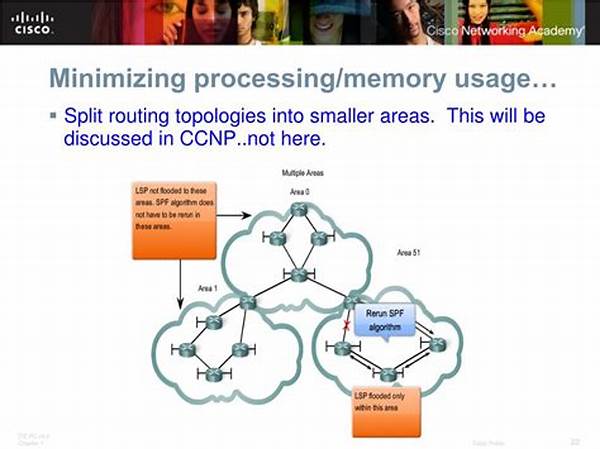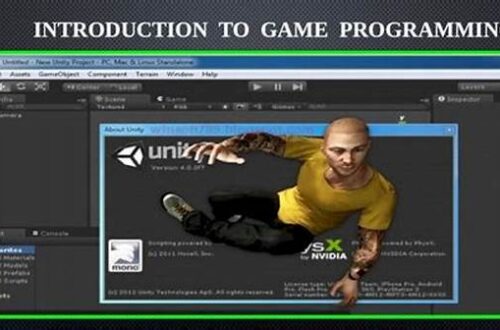Hey there, game creators! If you’re diving into the world of GameMaker Language (GML) for your next big project, you might be pondering how to keep things running smoothly—especially when it comes to memory. Fear not! I’m here to chat about some savvy strategies for minimizing memory usage in GML and ensuring your game performs like a dream. Let’s dive right in!
Read Now : Construct 3 Tiling Techniques.
Understanding Memory Usage in GML
When it comes to GML, it’s crucial to get a handle on your memory management skills. Think of it as the backbone of your game’s performance. Effective memory management not only enhances gameplay but also keeps your players happy by avoiding those pesky crashes. To start minimizing memory usage in GML, focus on optimizing your assets, like images and sounds, as they tend to gobble up the most memory. Additionally, pay attention to data structures and how you manage them throughout your game. By adopting efficient coding practices, you’ll not only minimize memory usage but also become a more proficient game developer.
One valuable tip for minimizing memory usage in GML is to use sprites wisely. Yes, they bring your game to life, but they can also be memory hogs if not managed properly. Consider using smaller sprites and optimizing their resolution. Speaking of resolution, always be mindful of the size of your background images. A high-definition image might seem appealing, but it can gobble up memory faster than you might think. So, aim for a balance between visual quality and memory consumption.
Another nifty trick for minimizing memory usage in GML is efficient resource loading. Load assets only when necessary, and free them up when they’re no longer needed. This real-time management ensures you’re not using excess memory at any given moment. With these approaches, you’re well on your way to crafting a game that’s not just fun but also optimally efficient.
Techniques for Minimizing Memory Usage
1. Sprite Sheet Usage: Rather than spamming individual sprites, consolidate them into sprite sheets. This technique is excellent for minimizing memory usage in GML as it reduces the number of individual assets in memory.
2. Texture Pages: Utilizing texture pages is a hidden gem for minimizing memory usage in GML. By grouping similar assets, you reduce loading times and improve performance.
3. Garbage Collection: Keep an eye on unnecessary variables and objects. Regularly cleaning them up is a smart move for minimizing memory usage in GML.
4. Data Structure Management: Avoid bloated data structures. Tailor your lists and arrays wisely to dodge unnecessary memory consumption, a key in minimizing memory usage in GML.
5. Lazy Loading: Implement lazy loading techniques. Load resources only when absolutely needed, thus minimizing memory usage in GML during gameplay sessions.
Advanced Memory Management
Let’s take a leap forward and delve into some advanced strategies for minimizing memory usage in GML. As your project grows, you’ll notice that memory management becomes both an art and a science. One reliable method is to profile your game regularly. Profiling helps pinpoint where memory is being excessively used, allowing you to make informed decisions.
Another advanced technique revolves around optimizing your loops and iterations. By implementing efficient algorithms and reducing loop complexity, you can drastically reduce memory spikes. This proactive step is often overlooked but can be pivotal in minimizing memory usage in GML. Moreover, be mindful of everything you instantiate during gameplay. Each object takes up resources, so managing their life cycle effectively ensures you’re optimizing memory usage.
Last but not least, leverage GML’s built-in functions for memory management. Familiarize yourself with the various options available, and utilize them to clear unnecessary memory usage. These strategies collectively pave the way for a smoother, more efficient game, ensuring you’re not just coding but crafting an experience players will cherish.
Memory Optimization Tips
1. Efficient Asset Management: Keep your asset library neat. Organize and use only what you need—key for minimizing memory usage in GML.
2. Code Refactoring: Regularly review and clean your code. This reduces clutter and, importantly, assists in minimizing memory usage in GML.
3. Use of Global Variables: Be cautious. Overuse leads to memory bloat. Use local variables to help in minimizing memory usage in GML.
4. Dynamic Memory Allocation: Allocate memory dynamically to save on resources, essential for minimizing memory usage in GML.
5. Optimize Audio Files: Compress and manage your audio files properly to maintain quality while minimizing memory usage in GML.
Read Now : Surface Profilometry Measurement Methods
6. Event Optimization: Streamline your event usage. Excessive and unnecessary events escalate memory usage, so be selective in GML.
7. Instance Management: Manage your instances astutely. Minimize those not in use during runtime to streamline memory in GML.
8. Background Optimization: Resize and optimize backgrounds. High-resolution backgrounds can adversely affect memory usage in GML.
9. Review and Profiling: Continually review and profile memory usage. This step ensures ongoing success in minimizing memory usage in GML.
10. Community Resources: Engage with the GML community. They are a treasure trove of knowledge and tips for minimizing memory usage in GML efficiently.
Practical Implementation in GML
Alright, let’s roll up our sleeves and tackle the practical aspects of minimizing memory usage in GML. To kick things off, always start with a game plan. Assess your assets and decide what’s absolutely necessary. This mindset of minimalism is paramount. Imagine you’re packing a suitcase for a trip—carry only the essentials. Similarly, don’t just stockpile assets ‘just in case.’ Each unnecessary asset can inflate your memory usage unnecessarily.
Once you’ve trimmed your assets, it’s time to focus on your code. Writing efficient code is like crafting a well-orchestrated symphony; it has to flow seamlessly without missing a beat. Keep your code tidy and avoid redundancies. Efficient use of loops, variables, and objects will pay dividends in minimizing memory usage in GML. And while you’re at it, don’t shy away from using built-in functions designed for optimization. They exist for a reason, and it would be a missed opportunity not to leverage them.
Lastly, never underestimate the power of a second pair of eyes—or thousands. The GML community is bountiful with experienced developers ready to offer advice and solutions that can often save hours of trial and error. By sharing our challenges and breakthroughs, we as a community grow stronger and more adept at optimizing the fascinating art of game development. With these practical tips in tow, you’re set to produce a GML masterpiece that’s light on memory but heavy on impact.
Common Mistakes to Avoid
Navigating the memory management landscape can be tricky, and it’s easy to fall into common pitfalls. One frequent misstep is overlooking the importance of sound memory management practices right from the start. It’s tempting to jump into development without planning, but this often leads to rampant memory usage. Avoid biting off more than you can chew with high-resolution assets or an overabundance of objects. Thoughtful planning is your best ally in minimizing memory usage in GML.
Another common blunder is neglecting regular code review and optimization. Hasty coding practices can lead to memory leaks, where resources are consumed and never released. To prevent this, incorporate frequent code inspections as part of your development routine. This proactive approach ensures that your game remains optimized and runs smoothly without unnecessary memory usage dragging it down.
Finally, failing to leverage available tools and resources can hinder your efforts to minimize memory usage. Both the game development community and the plethora of online tools available can offer invaluable insights and solutions. By staying informed and connected, you’ll avoid reinventing the wheel and instead, build on existing knowledge to keep your memory usage to a minimum.
Summary: Minimizing Memory Usage in GML
In the fast-paced world of game development using GML, understanding and implementing effective memory management techniques is more important than ever. From refining asset use to optimizing code, every minor adjustment adds up significantly. Minimizing memory usage in GML isn’t just about saving resources—it directly impacts game performance and stability, ensuring that players enjoy a seamless gaming experience without lag or crashes.
Moreover, by consciously adopting best practices such as efficient resource loading and diligent code refactoring, you effortlessly pave the way for better game development habits. It’s not just about solving immediate issues but setting your projects up for long-term success. As you integrate these strategies, you not only become proficient in minimizing memory usage in GML but also elevate your skills as a developer.
So, whether you’re a seasoned pro or just starting your GML journey, the importance of minimizing memory usage is paramount. Keep these tips and tricks at your fingertips to create games that are light on resources yet heavy on fun. Embrace the art of efficient memory management and watch your projects thrive in the hands of eager gamers worldwide.





